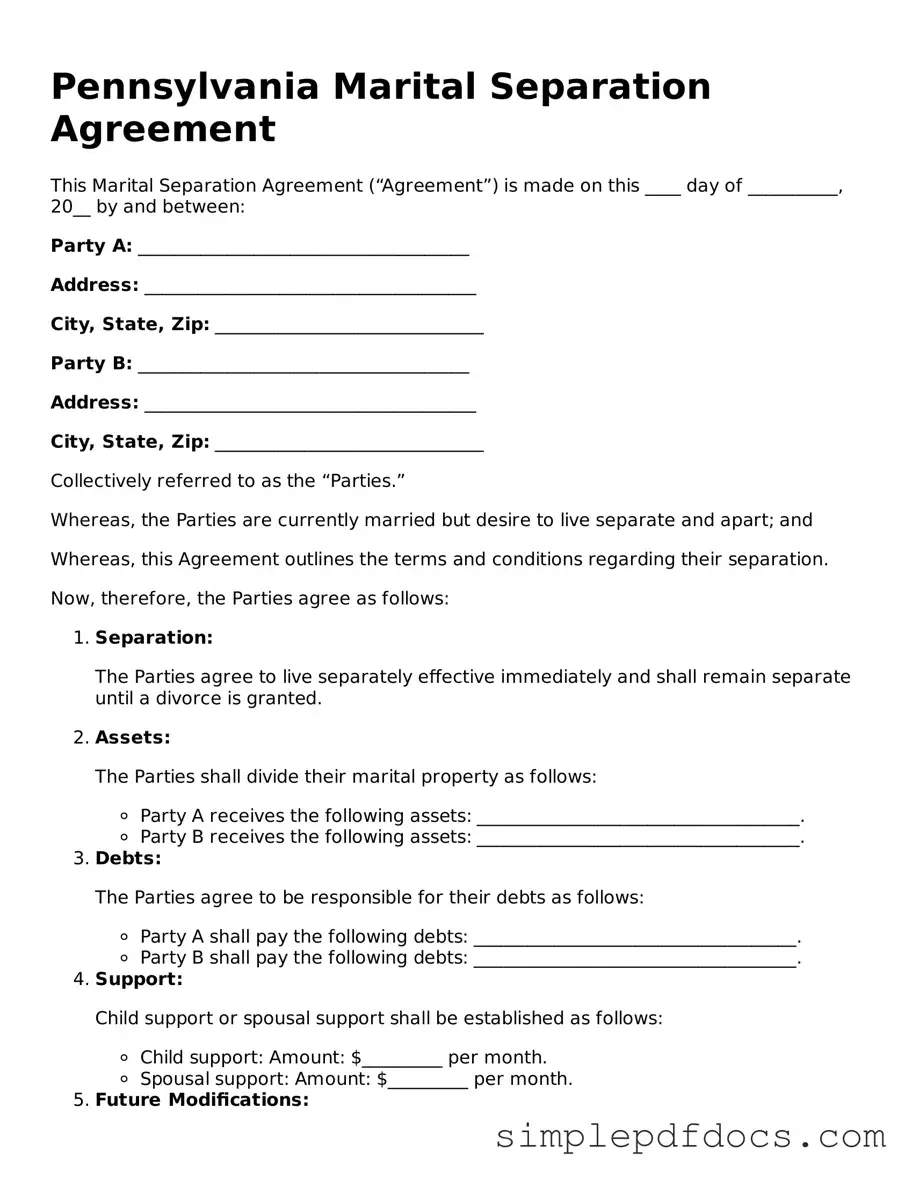Legal Marital Separation Agreement Document for the State of Pennsylvania
The Pennsylvania Marital Separation Agreement form is a legal document that outlines the terms and conditions agreed upon by spouses who wish to live separately while remaining legally married. This agreement addresses various aspects such as asset division, child custody, and support obligations. Understanding its importance can help couples navigate the complexities of separation with clarity and purpose.
Get Document Here
